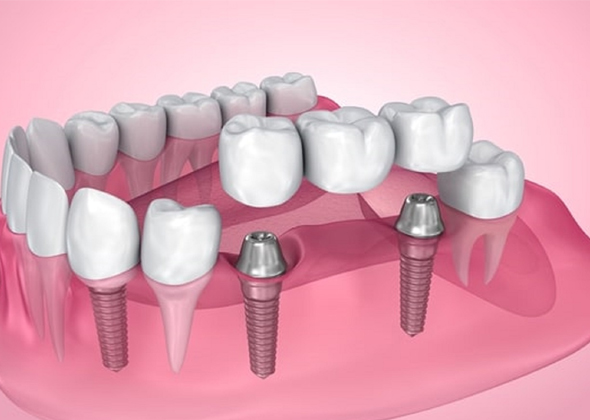Call Us Today 817-737-7668

Advantages of Dental Implants vs. Conventional Bridges
The dental implant replaces the missing tooth root, leaving the healthy neighboring teeth intact. The implant also acts as a support for the implant crown by transmitting chewing forces to the jaw to avoid bone resorption.
With conventional methods, the two healthy neighboring teeth must be ground down to support a bridge in place of a missing tooth. This results in a loss of natural tooth surface, and bone deterioration may occur as the bridge does not transmit chewing forces to the jaw.
A dental implant is also a cost-effective option. If you must decide between conventional crown and bridge and a dental implant restoration to replace a single tooth, there is also a monetary aspect to consider. According to a study1 on long-term costs, a single dental implant is regarded as a cost-effective option in comparison to a traditional three-unit fixed dental bridge. The cost difference on the latter is equalized in about seven years.
Conventional Crown & Bridge Treatment
- Two Neighboring teeth are ground down to support a bridge
- The bridge does not transmit chewing forces to the jaw bone
Dental Implants
- Tooth replacement with a dental implant
- Neighboring teeth remain intact

